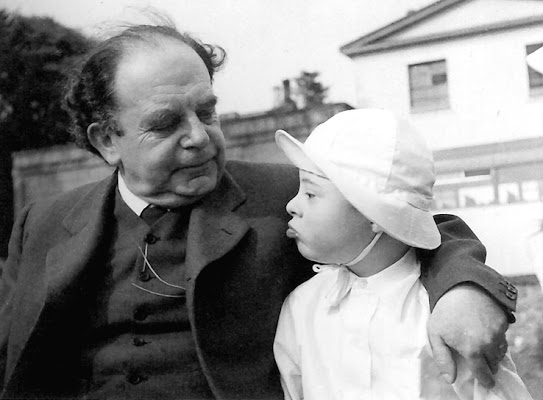More than Just a School: Eight Decades of Utopian Research

The Camphill School is a small piece of the larger Camphill Movement, which was founded by Dr. Karl Koenig in World War II. Dr. Koenig and his friends were refugees fleeing Nazi occupied Austria, and when they began their work in Scotland in 1940, they took as their task the medical care and education of children with severe intellectual disabilities. Dr. Koenig realized that different kinds of communities would be needed in the future, ones that served to mitigate the terrible political, economic and social phenomena that had sparked a murderous war. Such communities would be therapeutic places, islands of healing in the world, and would also create a suitable climate for children with special needs to thrive and grow.
Dr. Koenig was an established and talented pediatrician and embryologist who was also a keen student of the Austrian philosopher Rudolf Steiner. Steiner had struggled to formulate his own responses to the tragedy of the First World War some twenty years before and had developed a practical approach to economics, politics and cultural life that became the foundation for Dr. Koenig’s own work in community practice. Individual development lay at the core of Steiner’s philosophy, but with a utopian emphasis. Whilst much of the economic and political philosophy of the time heralded social Darwinism and the fight for survival between individuals, Steiner placed his emphasis on inner devotion and the path of the human being toward selflessness.
Steiner’s analysis of the economic system, characterized by increasing specialization and division of labor, was that it is impossible for the single human being to work for themselves. The shoe manufacturer cannot possibly wear all the shoes made by the factory nor can the farmer eat the enormous quantities of food grown on the modern farm. In effect each member of the economic order is part of a complex system which can only serve to meet the needs of others. Steiner believed that the system of compensation could work in a way that is more supportive of this ideal.
He commented:
“In a community of people working together, the well-being of the community will be the greater the less the individual claims for him or herself the proceeds of the work he or she has done: i.e. the more of these proceeds he or she makes over to fellow workers, and the more his or her own requirements are satisfied, not out of his or her own work, but out of work done by others”.
(Anthroposophy and the Social Question, 1905)
This is essentially a formula for measuring the social health of the community: when individuals work to meet the needs of others, social wellbeing arises as a result of selflessness. When the individual keeps the proceeds of their work totally for themselves, social ill health will result from the selfishness of that action. We now live in a society that is dominated by large disparities in wealth, where parents need to work two jobs in the real economy to pay the rent and meet their family’s needs, while a handful of individuals benefit from monopoly platforms and derivative based investments and personally control billions of dollars. Steiner would have said that this is a situation of extreme ill health, and when Dr. Koenig founded Camphill he had a different approach to life in mind.
Dr. Koenig based his approach to this in a way that models another quote from Steiner very closely:
“People must be educated for voluntary work, one for all and all for one. Everyone has to act accordingly. If you were to found a small community today in which everyone throws all their income into a common bank account and everyone works at whatever he can do, then your living is not dependent on what work you can do, but rather this living is affected out of the common consumption. This brings about a greater freedom than the coordination of pay with production….”
(The Social Question and Theosophy, 1905)
Dr. Koenig set up a system exactly like this for resident coworkers at Camphill. The economy he jump-started was truly a shared economy. Each coworker gave whatever labor they could, and the needs of each were met out of the commonwealth generated. This is essentially a needs based system of compensation that allows money to flow to the things for which it is necessary.
The Camphill School works with a version of this system today. Residential coworkers sit together to make their annual budget for individuals and families. The total payroll for the year cannot exceed the budgeted amount, but the needs of each individual are met. Salaries can go up, but they can come down too, and sometimes drastically. The families with children often need most of the resources. The tenured coworker working as a director has children who have grown and become emancipated from their parents: our most experienced residential staff often have the smallest salaries.
This system allows us to focus the community’s finances on growth, on children, on lower and high school education and advanced degrees, on health and medical care and so forth. The things that the school stands for are reflected directly in our compensation arrangements.
Steiner’s economic, political, and cultural work, broadly known as ‘social three-folding’, has been one of the foundational pillars of the Camphill model. For almost eighty years the Camphill movement has experimented with these ideas. You might not see the complexity of these social ideas when you visit one of our places, but you can be sure that part of the atmosphere you experience is because of the depth of our social model. Everybody matters at Camphill, and money can be a tool to make that sentiment real.